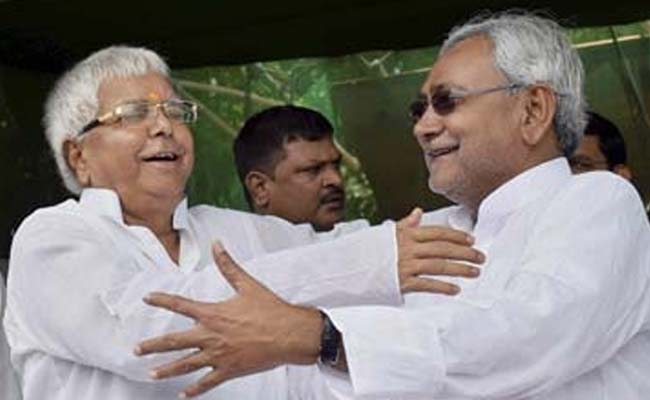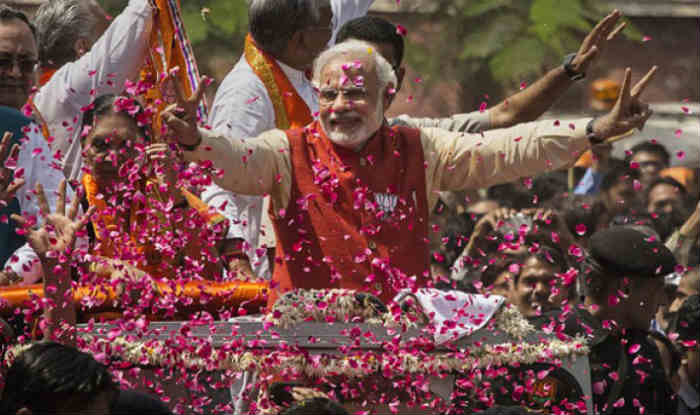K G Suresh
Indian democracy has adequate space for a viable ‘third’ alternative or even an alternative in the first place if the Congress fails to take off. But it has to be ensured that such a front is evolved gradually, based on past experiences of the good and the bad
With Bihar Chief Minister Nitish Kumar assuming charge as the national president of Janata Dal (United), prospects of the revival of the defunct Third Front idea has again become the talk of the town. Political observers have often compared the idea to a seasonal frog which appears ahead of general elections and disappears thereafter. Twice in the last two decades, the satraps of these non-Congress and non-BJP regional parties with divergent interests and ideologies, stitched up a rag-tag alliance and assumed power at the Centre, with outside support from the Congress. However, these coalitions remained politically unstable and eventually fell under the weight of their own inherent contradictions.
Ahead of the 2014 Lok Sabha poll too, one witnessed the rather premature demise of the 11-party Third Front. After the J Jayalalithaa-led AIADMK dumped the alliance with the Left parties in Tamil Nadu within days of its announcement, other key constituents, the Samajwadi Party, the JD(U) and the Left parties decided to contest the elections on their own in Uttar Pradesh, Bihar and other States.
The then CPI general secretary, (late) AB Bardhan admitted in a television interview later that it was a mistake for the Left Front to attempt to forge a third front alliance before the poll. The proposed Third Front also did not have the support of either Trinamool Congress leader Mamata Banerjee, BSP supremo Mayawati, BJD chief Naveen Patnaik or AAP chief Arvind Kejriwal — all of whom are powerful in their home States.
Ahead of the 2009 general election, one saw former Prime Minister HD Deve Gowda taking the initiative for the formation of a Third Front with a massive rally in Karnataka, attended and addressed by several leaders including Prakash Karat, AB Bardhan, Chandrababu Naidu and BSP’s Satish Chandra Mishra, besides representatives of the AIADMK and the Haryana Janhit Congress. Ever an aspirant for the top post, the JD(S) supremo goaded these parties to chalk out a ‘common minimum programme’, but failed to achieve any breakthrough.
Ironically, even as the results were trickling in, one saw the pathetic sight of Gowda’s son and former Chief Minister HD Kumaraswamy entering 10, Janpath, with his face covered, to extend his party’s unconditional support to UPA2. It was not long before that he had deserted the Congress to form a coalition Government in Karnataka with the BJP and later backed out in the name of ‘secularism’, when he had to hand over the chief ministership of the State to the BJP under a 20-month rotation agreement.
Ahead of the election, CPI(M) leader Sitaram Yechury had discounted the possibility of its allies in the so-called Third Front embracing the Congress or the BJP after the Lok Sabha poll. With the BSP and the JD(S) switching loyalties to the UPA and the TRS walking over to the NDA within days of the poll verdict, an embittered Yechury had to eat his words and state that the post-poll developments have proved that the ‘cut and paste’ alliance was a mistake.
Subsequently, one saw the Samajwadi Party along with its arch rival from Uttar Pradesh, the Bahujan Samaj Party led by Mayawati, who had projected herself as the Third Front’s prime ministerial candidate in the 2009 poll, together serving as crutches for the UPA Government after its key allies, the TMC and the DMK walked out of the alliance.
While there has been a clamour for bipolar polity in the country on the lines of the United States and the United Kingdom, the fact remains that India is a geographically diverse country with multiplicity of languages, castes, religions, et al. It was felt that the so-called mainstream parties have failed in the past six decades to cater to the grievances and aspirations of the people resulting in the emergence of regional parties.
Apart from providing an alternative to both the Congress and the BJP, this front, it was felt, had the potential to bring together under a national banner a host of parochial political parties for a greater common cause. These political parties could bring to the national table a range of regional experiences and thereby herald a bottom-up approach as against the prevailing top-down approach to development. While the country needs a strong Centre in terms of defence, external affairs and dealing with insurgency, terrorism and Maoism, the planning and developmental processes are in urgent need of decentralisation. Here again, one hoped that the Third Front parties could help strengthen the federal characteristics enshrined in the Constitution.
If anti-Congressism was the politically correct stand from the mid-60s to the late 80s, interspersed with the failed experiments of the Janata Party and the National Front coalitions, anti-BJPism laid the foundations of a third alternative in the 90s and thereafter. However, by aligning with both the major national parties from time to time under the garb of ‘stability’ or ‘keeping communal forces at bay’, the Third Front partners have come to be viewed as power-hungry regional satraps wanting to share the spoils of office at the Centre. With Prime Minister Narendra Modi continuing to top the popularity charts among political leaders and the Congress not yet showing signs of any major revival, there is a vacuum so far as an effective and constructive political opposition at the Centre is concerned.
Can Nitish Kumar fill up that gap? His latest move is yet to elicit a positive response even from his ally, Lalu Prasad, in his home turf of Bihar itself. With the Congress and the Left parties coming together in West Bengal to oppose Mamata Banerjee, the possibility of Trinamool Congress being part of a future Third Front seems unrealistic for the time being. There are also question marks on whether Naveen Patnaik would join hands Nitish Kumar and Mulayam Singh Yadav play second fiddle.
Yet, it would be premature to write the epitaph of the Third Front, for politics is the art of the possible. Notwithstanding the clamour for a bipolar polity, regional parties cannot be wished away. They are here to stay till the national parties reach out to the grassroots across the country and cater to the growing aspirations of the people. They will continue to be a force to reckon with so long as illiteracy remains, caste and linguistic loyalties are in vogue and regional imbalance persists.
Indian democracy has adequate space for a viable ‘third’ alternative or even an alternative in the first place if the Congress fails to take off, but it has to be ensured that the ‘front’ is evolved gradually, based on past experiences with all opportunist elements kept out, adherence to certain commonly agreed policies, principles, ideology and programme of action, coordination within and outside parliament as also seat arrangements, common manifesto and joint campaign during state and national elections.
Courtesy: Daily Pioneer






